BLOG
MARKET INTEL by PharmaCompass
CONTENT by Suppliers
- Interview #SpeakPharma
- Video #SupplierSpotlight
- Vlog #PharmaReel
- Company Bio #AboutSupplier
- Service Bio #AboutCapabilities
News
Create content with us, ask us


- TECH TRANSFER
- OVERVIEW
- INJECTABLE / PARENTERAL
- LYOPHILIZATION
- CLINICAL SUPPLY
- TABLET
- CAPSULE
- POWDER / BLEND
- CONTROLLED / IMMEDIATE / MODIFIED RELEASE
- GRANULE / PELLETS
- OPHTHALMIC
- LIPOSOME / MICROSPHERE / NANOPARTICLE
- OTIC
- CREAM / GEL / LOTION / OINTMENT
- INHALATION / NASAL
- PATCH
- BUCCAL / ORODISPERSIBLE
- CHEWABLE / SUCKABLE
- LIQUID FORMULATION
- EMULSION
- SUSPENSION
- VAGINAL / RECTAL
- SCALE-UP CAPABILITIES
- LIPID FORMULATION
- STERILE LIQUID FORMULATION
- PEDIATRIC FORMULATION
- DRY / WET GRANULATION
- PROCESS DEVELOPMENT & OPTIMIZATION
- SUPPOSITORY
- CONTROLLED SUBSTANCE
- SOFTGEL CAPSULE
- SPRAY DRYING
- LOW TEMPERATURE / CRYOGENIC CONDITION (-78 °C)
- SMALL SCALE BATCH
- STEROID / HORMONE
- PROCESS VALIDATION STUDIES
- TOPICAL
- COMPOUNDING
- POWDER
- ANTIBODY DRUG CONJUGATE

01 Tablet
02 Tablet
03 Tablet
04 Tablet
05 Tablet
06 Tablet
07 Tablet
08 Tablet
09 Tablet
10 Tablet
11 Tablet
12 Tablet
13 Tablet
14 Tablet
15 Tablet
16 Tablet

01 AUPA Biopharm
02 AVIZ Laboratories
03 Adare Pharma Solutions
04 Adragos Pharma
05 Aizant Drug Research Solutions Pvt. Ltd.
06 Appcure Labs
07 Aragen Life Sciences
08 Athena Pharmaceutiques
09 Atral
10 Aurigene Pharmaceutical Services
11 Avaca Pharma
12 Avivia
13 Axxelent Pharma Science
14 Biolink LifeSciences
15 Bioplus Life Sciences
16 Bora Pharmaceuticals
17 Cambrex Corporation
18 Catalent Pharma Solutions
19 Chanelle Medical
20 ChemExpress
21 Custom Pharma Services
22 Cyndea Pharma S.L
23 Douglas CDMO
24 Ethypharm
25 Eurofins CDMO
26 Evonik
27 Fareva
28 GALENIX INNOVATIONS
29 GRAM Laboratory Inc
30 Gensenta Pharmaceuticals
31 Globela Pharma
32 Halo Pharmaceutical
33 ICE Pharma
34 IDRS Labs
35 JAMP PHARMA
36 JGL d.d
37 JSL Health Sciences
38 LGM Pharma
39 Labiana Life Sciences S.A
40 Latac Pharma
41 M2M Pharmaceuticals Ltd
42 Madras Pharmaceuticals
43 Medcent Pharma
44 Mikart
45 Mission | CDMO
46 Neovant Therapeutics
47 Novick Biosciences
48 ORIT LABS LLC
49 Octavius Pharma Pvt. Ltd
50 Olpha
51 Om Sai Pharma Pack
52 One Pharma
53 PCI Pharma Services
54 PENMIX LTD.
55 PSR Pharma Science and Research
56 Pfizer CentreOne
57 PharmaVize NV
58 Pierre Fabre
59 Piramal Pharma Solutions
60 Porton Pharma Solutions
61 Prague Scientific
62 Progenerics Pharma Pvt Ltd
63 Quotient Sciences
64 Recipharm AB
65 Ropack Inc
66 STABICON LIFE SCIENCE PVT LTD
67 Safetab Life Science
68 Sai Life Sciences Limited
69 Sentio BioSciences
70 Servier
71 Sharp
72 Siegfried AG
73 Societal CDMO
74 Sofarimex
75 Softigel Procaps
76 Sushen Medicamentos Pvt. Ltd
77 Tianjin Hankang Pharmaceutical Biotechnology
78 Torrent Pharmaceuticals Limited
79 UPM Pharmaceuticals
80 Unither Pharmaceuticals
81 Vici Health Sciences

01 Belgium
02 Canada
03 China
04 China
05 Colombia
06 Croatia
07 Czech Republic
08 France
09 France
10 France
11 Germany
12 Germany
13 Greece
14 India
15 India
16 Ireland
17 Italy
18 Latvia
19 Luxembourg
20 Netherlands
21 New Zealand
22 New Zealand
23 Portugal
24 South Africa
25 South Korea
26 Spain
27 Sweden
28 Switzerland
29 Taiwan
30 Turkey
31 U.S.A
32 U.S.A
33 U.S.A
34 U.S.A
35 U.S.A
36 U.S.A
37 U.S.A
38 United Kingdom
39 United Kingdom
- Analytical > Analytical Method Development
- Analytical > Analytical Testing Services > Inhalation Products
- Analytical > BioAnalytical Services
- API & Drug Product Development > API Development
- API & Drug Product Development > API Development > Antibody Drug Conjugate
- API & Drug Product Development > API Development > Fine Chemical / Intermediate
- API & Drug Product Development > API Development > High Potency APIs (HPAPIs)
- API & Drug Product Development > API Development > Impurity / Reference Standard
- API & Drug Product Development > API Development > Oligonucleotide / Polynucleotide
- API & Drug Product Development > API Development > Oligosaccharides & Polysaccharides
- API & Drug Product Development > API Development > Overview
- API & Drug Product Development > API Development > Process Development & Optimization
- API & Drug Product Development > API Development > Protein / Peptide
- API & Drug Product Development > API Development > Separation & Purification
- API & Drug Product Development > API Development > Small Molecules
- API & Drug Product Development > API Development > Spray Drying
- API & Drug Product Development > Formulation Development
- API & Drug Product Development > Formulation Development > Buccal / Orodispersible
- API & Drug Product Development > Formulation Development > Capsule
- API & Drug Product Development > Formulation Development > Chewable / Suckable
- API & Drug Product Development > Formulation Development > Clinical Supply
- API & Drug Product Development > Formulation Development > Compounding
- API & Drug Product Development > Formulation Development > Controlled / Immediate / Modified Release
- API & Drug Product Development > Formulation Development > Controlled Substance
- API & Drug Product Development > Formulation Development > Granule / Pellets
- API & Drug Product Development > Formulation Development > Inhalation / Nasal
- API & Drug Product Development > Formulation Development > Injectable / Parenteral
- API & Drug Product Development > Formulation Development > Liquid Formulation
- API & Drug Product Development > Formulation Development > Lyophilization
- API & Drug Product Development > Formulation Development > Ophthalmic
- API & Drug Product Development > Formulation Development > Pediatric Formulation
- API & Drug Product Development > Formulation Development > Scale-Up Capabilities
- API & Drug Product Development > Formulation Development > Sterile Liquid Formulation
- API & Drug Product Development > Formulation Development > Suspension
- API & Drug Product Development > Formulation Development > Tablet
- API & Drug Product Development > Formulation Development > Topical
- API & Drug Product Development > Preformulation & Material Science > Particle Size Reduction & Micronization
- API & Drug Product Development > Preformulation & Material Science > Polymorph & Crystal Screening
- API & Drug Product Development > Preformulation & Material Science > Solubility Assessment & Enhancement
- API & Drug Product Development > Preformulation & Material Science > Taste Masking
- API Manufacturing > Antibiotic
- API Manufacturing > Antibody Drug Conjugate
- API Manufacturing > Biologics, Bioprocess & Fermentation
- API Manufacturing > Chiral Synthesis
- API Manufacturing > Clinical Supply
- API Manufacturing > Continuous Flow Process
- API Manufacturing > Contract Manufacturing
- API Manufacturing > Controlled Substance
- API Manufacturing > Custom Synthesis & Manufacturing
- API Manufacturing > Cytotoxic Compound
- API Manufacturing > Drying > Spray Drying
- API Manufacturing > Fine Chemical / Intermediate
- API Manufacturing > GMP Manufacturing
- API Manufacturing > Hazardous Chemistry
- API Manufacturing > High Potency APIs (HPAPIs)
- API Manufacturing > Micronization
- API Manufacturing > Oligonucleotide / Polynucleotide
- API Manufacturing > Oligosaccharides & Polysaccharides
- API Manufacturing > Organometallic Chemistry
- API Manufacturing > Organometallic Chemistry > Cyanation
- API Manufacturing > Organometallic Chemistry > Metal Hydride Reduction
- API Manufacturing > Ozonolysis
- API Manufacturing > Process Development & Optimization
- API Manufacturing > Protein / Peptide > Synthesis
- API Manufacturing > Reference Standard
- API Manufacturing > Scale Up
- API Manufacturing > Separation & Purification
- API Manufacturing > Small Molecules
- Clinical Trials > Compliance, Regulatory & Consulting
- Clinical Trials > Packaging & Logistics
- Clinical Trials > Medical Writing & Language Translation
- Clinical Trials > Patient / Investigator Recruitment
- Clinical Trials > Technology / Data / Analytics
- Drug Product Manufacturing > Biologic Drugs
- Drug Product Manufacturing > Capsule
- Drug Product Manufacturing > Capsule > Steroid / Hormone
- Drug Product Manufacturing > Compounding
- Drug Product Manufacturing > Cream / Lotion / Ointment
- Drug Product Manufacturing > Emulsion > Overview
- Drug Product Manufacturing > Gel > Overview
- Drug Product Manufacturing > Granule / Pellet
- Drug Product Manufacturing > Injectable / Parenteral
- Drug Product Manufacturing > Injectable / Parenteral > Overview
- Drug Product Manufacturing > Injectable / Parenteral > Pre-Filled Syringe
- Drug Product Manufacturing > Liquid
- Drug Product Manufacturing > Lyophilization
- Drug Product Manufacturing > Nasal
- Drug Product Manufacturing > Softgel Capsule
- Drug Product Manufacturing > Solution > Overview
- Drug Product Manufacturing > Spray
- Drug Product Manufacturing > Suppository
- Drug Product Manufacturing > Suspension > Overview
- Drug Product Manufacturing > Syrup
- Drug Product Manufacturing > Tablet
- Drug Product Manufacturing > Technologies
- Drug Product Manufacturing > Technologies > Orally Disintegrating Tablets (ODTs)
- Drug Product Manufacturing > Technologies > Taste Masking
- Packaging > Clinical Services
- Packaging > Contract Services
- Packaging > Contract Services > Serialization Compliance
- Packaging > Logistic Services
- Empty Capsules
- Empty Capsules > Clinical Supply
- Empty Capsules > HardGel
- Empty Capsules > Inhalation
- Emulsifying Agents
- Soft Gelatin
- Solubilizers
Overview of the pharmaceutical formulation development & manufacturing of oral solid dose (OSD) dosage forms, specifically tablets & mini tablets.
Q1. Tablet, what is it and how is it used in pharmaceuticals?
Pharmaceutical tablets are solid, unit dosage forms prepared by compressing a drug (API) with or without diluents. Furthermore, tablets offer flexibility as oral formulations in their use and are available as film coated tablets, enteric coated tablets, buccal tablets, lozenges, extended release tablets, complex modified release tablets, etc. each having their own benefits.
- Complex-modified release tablets: The development of complex modified-release tablets is achieved via controlled drug delivery, involving both delayed and extended release systems of oral administration. These delivery mechanisms, employed in oral formulations like complex modified release tablets, alter the timing or rate of release of active ingredients to successfully modify the expulsion of poorly water-soluble drugs in the body.
Typical drug delivery methods include liquids, creams, sprays, injectables, suppositories, etc. However, the preferred dosage form by a large margin, remains to be oral solid dose (OSD) dosage forms. Solid dosage manufacturing trends show that oral solid dose (OSD) dosage forms continue to play a major role in the contract manufacturing and CDMO industry, representing about 70% of the market.
Oral solid dosage outsourcing trends further reveal that despite the increasing types of biologics, oral solid forms such as tablets & capsules- remain dominant in the market. The ease of administration, identification, and relatively better taste assert oral solid forms as the leading mode of drug administration. Besides tablet formulations and capsules, there are other types of oral solid dose (OSD) dosage forms, namely:
- Powders
- Granules
- Sachets
Amongst these pharmaceutical products, tableted oral solid forms are the preferred formulations for drug delivery. Tablets have the greatest dose precision, lowest content variability, lowest cost, and various other favorable qualities that make them a desired choice amongst pharma CMOs and CDMOs offering formulation development services (contract development services).
Active pharmaceutical ingredients (API) and excipients such as binders, lubricants, and fillers are the diverse ingredients present in tablets. In order to create a homogenous mixture, the process of blending is employed during tablet manufacturing to mix the excipients and APIs together. Ultimately, tablets function as unit doses that deliver the desired quantity of active pharmaceutical ingredients (API) to the end consumer with unparalleled accuracy.
Q2. What are the steps involved in the drug product (formulation) development of tablets?
Pharma CDMOs that offer tablet drug product development services with access to well-equipped development, pilot scale and commercial facilities can work with tablet batches from a few hundred grams to full commercial production scale.
Tablet formulation development is a stylized process. Each Pharma CMO and CDMO uses their own pharmaceutical formulation development and manufacturing methodology. Some use the systematic Design of Experiments (DOE) approach, some test one variable at a time, and many use a combination of the two. However, all formulators need a methodology that gives them reliable and useful information to identify problems before the formulation development of tablets begin.
The pharmaceutical formulation development of tablets is completed in the following steps:
1. Preformulation Studies: Preformulation is the stage of development in the pharmaceutical industry, during which the physicochemical properties of drug substances are characterized and established. This could provide important information for formulation design or anticipate the needs for molecular modification. Every drug has intrinsic chemical and physical properties which need to be considered before the formulation development of pharmaceutical products.
2. Dispensing: The first step in tablet development and formulation, after preformulation studies have been conducted and appropriate oral formulations have been chosen, is called dispensing. Dispensing involves weighing all the ingredients in tablets accurately to ensure desired API & excipient amounts in the tablet formulations.
3. Sizing: The second step in tablet formulation development is known as sizing. During sizing the active ingredients and pharmaceutical excipients used in tablet formulations are broken down to finely divided forms, in order to augment flow properties and enable easier mixing of the ingredients in oral formulations.
4. Powder Blending: Powder blending uses cutting edge technologies to mix powders and achieve homogeneous mixtures. This step of tablet development and formulation gives blend uniformity and distributes lubricants evenly in the resulting powdered mixture.
5. Granulation: Most fine pharmaceutical compounds require the formulation development process known as granulation, offered by pharmaceutical CDMOs, to improve their flow properties and processing properties prior to tableting. Granulation can be divided into two types: dry granulation and wet granulation.
In the pharmaceutical development industry, granulation may be defined as a pharmaceutical development service wherein small particles of drugs and excipients adhere together by forming bonds which result in the formation of large aggregates called granules. Contract development & manufacturing organizations (CDMO) and pharma CMOs offer such pharmaceutical contract manufacturing services.
6. Drying & Dry Screening: If the wet granulation route of tablet formulation development is used in the previous step, then it is followed by drying and dry screening. This step in tablet development and formulation refers to drying wet granules after they have been screened. Dry screening in tablet development refers to passing the dried granules through a mesh screen to achieve the oral formulation ready to undergo compression.
7. Tablet Compression: The term “direct compression” is defined as the drug product formulation development process by which tablets are compressed directly from powdered mixtures of API and suitable excipients. Direct compression (DC) is by far the simplest means of tablet formulation development and manufacturing, as it only requires the active pharmaceutical ingredient (API) to be properly blended with appropriate excipients before compression.
8. Coating: Tablets are coated to achieve taste masking of bitter tastes and unpleasant odors of the pharmaceutical oral formulations. During the formulation development of tablets, coatings can change the release profiles of the oral solid dose (OSD) dosage forms. Complex modified release tablets can be formulated using coatings. Therefore, coating is considered as a major tablet drug product development service to modify the release profile of drug products.
Q3. What are pharmaceutical mini tablets and what are the benefits they offer?
Mini-tablets represent a new trend in solid dosage formulation development and manufacturing, with the main goal of overcoming some therapeutic obstacles. Pharmaceutical mini tablets are solid oral dosage forms with a diameter less than or equal to 3 mm, separated into subunits of conventional tablets. Mini-tablet formulation development is similar to standard tablets, but the only difference is the use of multiple punches. Pharma CMOs and CDMOs offer mini tablets drug product development services.
Numerous CDMOs offer mini tablets drug product development services for pediatric and geriatric dosage forms since they are easier to swallow than conventional tablets and capsules. In addition, they can be used to meet a full range of dissolution profiles, including delayed-release, controlled-release, and combination-release.
Mini tablets are multiple unit dosage forms and are better than granules and pellets as mini tablet manufacturing is easy to undertake, and they are more stable. Mini-tablets offer finished dosage form flexibility in that they can be delivered as capsules, sachets or compressed into larger tablets.
These mini tablet drug delivery systems are ideal for delivering fixed dose combination pharmaceutical oral solid forms. In mini tablets drug product development services, one type of pharmaceutical mini-tablet can be mixed with another or with pellets, granules or powders and then filled into finished dosage forms in order to avoid incompatibilities in combination products.
Mini tablet drug product development services offer various benefits, including but not limited to:
- Increase in productivity
- Acceleration in time to market
- Less risk of dose dumping
- Ease of minitablet manufacturing
- Mini tablet drug delivery systems are ideal for coating
- Mini tablet formulation development can produce formulations with various release profiles
- High drug loading
Q4. What are the technologies involved in the formulation development of mini tablets?
In principle, mini-tablets development and formulation is similar to the larger, conventional tablet development and formulation. However, successful development of mini tablet drug delivery systems require specialist expertise as many drug product development issues are enhanced due to their small size. Mini tablet drug product development services are enabled by several tablet technologies developed for mini tablet development and formulation. Mini tablet pharmaceutical development services and the mini tablet formulation technologies that enable them, are explored below:
1. Dispensing:
Dispensing is performed with the help of weighing and measuring apparatuses and aims to accurately weigh out API, excipients & other ingredients that make a tablet.
2. Sizing:
Sizing drug product development services are carried out to reduce and obtain the desired particle sizes before later stages of development of mini tablet formulations. Sizing is carried out with the help of fluid energy mills, colloidal mills, ball mills, etc.
3. Blending/Mixing:
Blending or mixing is very important for the drug product development of oral solid dosage forms. Blending mini tablet drug product development services create homogenized mixtures for granulation followed by compression. Blending is carried out by using tumbling blenders, oblicone blenders, agitated powder blender and other mini tablet formulation technologies.
4. Granulation:
Granulation creates aggregates of adhered pharmaceutical oral solid forms that are ready for compression. This mini tablet drug product development service is achieved with the help of fluidized bed granulators, roto granulators, high shear granulation mini tablet formulation technologies, etc.
5. Compression:
Compression in mini tablet development and formulation is the stage at which fine powders and APIs are directly compressed for the development of mini tablet formulations. Compression mini tablet drug product development services are carried out with the help of rotary tablet press, multiple tip punch machines, etc.
6. Coating:
During the development of mini tablet formulations, coatings are used to mask bitter taste and unpleasant odor of mini tablet pharmaceutical oral solid form to make them more suitable for consumption. This drug product formulation development service can be performed on fluidized bed coaters, perforated coating pans, standard pans, etc.
Evaluation of the physical and analytical properties of the mini tablets produced can help define the optimum drug formulation development route, composition, and processing window, and can be leveraged to assess manufacturing risks and risks associated with the corresponding mini tablets drug product development services. Many of the tests applied to larger-sized tablets can also be applied to mini tablets, although some modifications may be needed.
Q5. What are the latest advances in tablet manufacturing?
Traditional drug formulation development of tablets can be expensive, time consuming, inefficient and creates a lot of waste. Recent trends in the drug product formulation development and manufacturing of tablets reduce the need for manual input and process validation drug product support services, and further enhance product quality and process reliability.
Industrial pharmaceutical product development of tablets and mini tablet development and formulation has progressed to complete automation. With trends towards global marketing and regulatory requirements, the specifications for the facility, and the product too are becoming more stringent in recent times. Tablet CDMOs offering formulation development services use several tableting technology to meet the requirements of the growing market.
Various tablet CDMO offering formulation development services with recent advancements in tableting, partake in the production of immediate release tablets such as orally dispersible mini tablets, mouth dissolving/fast dissolving tablets, conventional effervescent, uncoated and film coated tablets etc. modified release tablet formulations including layered tablets such as inlay tablets, tablet in tablet, bilayer tablet, medicated chewing gum, tablet tarts, pastilles, lollipop, tablet inserts, clinicaps, caplets and child ecstasy tablets. The latest advances in tablet and mini tablet development and formulation are listed below.
- Advancements in raw materials:
Ready to use co-pressed blends, which are ready for direct compression, cut out multiple steps in drug formulation development of tablets and are gaining traction amongst drug product support service providers. These oral formulations accelerate time to market for finished dosage forms.
- Advancement in granulation technology:
Granulation is one of the most important drug product support services in the pharmaceutical product development of tablets. Pharmaceutical contract manufacturing units are shifting towards using steam granulation, melt granulation, moisture activated dry granulation, etc. over traditional granulation as it creates superior products, decreases time to market, and cuts steps from the standard processes set in place.
- Advancements in compression technology offered by tablet CDMO:
Recent advances in compression are due to innovations in compression technologies. Pharmaceutical contract manufacturing units are moving towards double punch technologies, exchangeable compression modules, die-disc technologies, etc. in order to provide superior drug product support services for tablets.
- Advances in tablet coating techniques:
The pharmaceutical product development of tablets is augmented by novel coating techniques like fluid bed or air suspension coating, compression coating, electrostatic coating, etc. The drug product development of oral dosage forms can make drug products undesirable to consumers. Therefore advances in coating techniques and technologies can create augmented drug product support services for coating tablets.
All Suppliers
01
Pharma Service : API & Drug Product Development
CDMO FOR HIGHLY POTENT TABLETS
Category : Formulation Development
Sub Category : Tablet
Pharma Service : API & Drug Product Development
02
Pharma Service : API & Drug Product Development
Category : Formulation Development
Sub Category : Tablet
Pharma Service : API & Drug Product Development
03
Pharma Service : API & Drug Product Development
Category : Formulation Development
Sub Category : Tablet
Pharma Service : API & Drug Product Development
04
Pharma Service : API & Drug Product Development
TABLET FORMULATION DEVELOPMENT
Category : Formulation Development
Sub Category : Tablet
Pharma Service : API & Drug Product Development
05
Pharma Service : API & Drug Product Development
MATRIX TABLET FORMULATION DEVELOPMENT
Category : Formulation Development
Sub Category : Tablet
Pharma Service : API & Drug Product Development
06
Pharma Service : API & Drug Product Development
TABLET FORMULATION DEVELOPMENT
Category : Formulation Development
Sub Category : Tablet
Pharma Service : API & Drug Product Development
07
Pharma Service : API & Drug Product Development
TABLET FORMULATION DEVELOPMENT
Category : Formulation Development
Sub Category : Tablet
Pharma Service : API & Drug Product Development
08
Pharma Service : API & Drug Product Development
FORMULATION DEVELOPMENT OF TABLETS
Category : Formulation Development
Sub Category : Tablet
Pharma Service : API & Drug Product Development
09
Pharma Service : API & Drug Product Development
Category : Formulation Development
Sub Category : Tablet
Pharma Service : API & Drug Product Development
10
Pharma Service : API & Drug Product Development
TABLET FORMULATION DEVELOPMENT
Category : Formulation Development
Sub Category : Tablet
Pharma Service : API & Drug Product Development
11
Pharma Service : API & Drug Product Development
TABLET FORMULATION DEVELOPMENT
Category : Formulation Development
Sub Category : Tablet
Pharma Service : API & Drug Product Development
12
Pharma Service : API & Drug Product Development
FORMULATION DEVELOPMENT OF TABLETS
Category : Formulation Development
Sub Category : Tablet
Pharma Service : API & Drug Product Development
13
Pharma Service : API & Drug Product Development
FORMULATION DEVELOPMENT FOR TABLETS
Category : Formulation Development
Sub Category : Tablet
Pharma Service : API & Drug Product Development
14
Pharma Service : API & Drug Product Development
Category : Formulation Development
Sub Category : Tablet
Pharma Service : API & Drug Product Development
15
Pharma Service : API & Drug Product Development
Category : Formulation Development
Sub Category : Tablet
Pharma Service : API & Drug Product Development
16
Pharma Service : API & Drug Product Development
ORAL SOLIDS - EARLY FORMULATION DEVELOPM...
Category : Formulation Development
Sub Category : Tablet
Pharma Service : API & Drug Product Development
17
Pharma Service : API & Drug Product Development
PROTOTYPE FORMULATION OF TABLET
Category : Formulation Development
Sub Category : Tablet
Pharma Service : API & Drug Product Development
18
Pharma Service : API & Drug Product Development
TABLET FORMULATION DEVELOPMENT
Category : Formulation Development
Sub Category : Tablet
Pharma Service : API & Drug Product Development
19
Pharma Service : API & Drug Product Development
TABLET FORMULATION DEVELOPMENT
Category : Formulation Development
Sub Category : Tablet
Pharma Service : API & Drug Product Development
20
Pharma Service : API & Drug Product Development
FORMULATION DEVELOPMENT OF TABLETS
Category : Formulation Development
Sub Category : Tablet
Pharma Service : API & Drug Product Development
21
Pharma Service : API & Drug Product Development
Category : Formulation Development
Sub Category : Tablet
Pharma Service : API & Drug Product Development
22
Pharma Service : API & Drug Product Development
Category : Formulation Development
Sub Category : Tablet
Pharma Service : API & Drug Product Development
23
Pharma Service : API & Drug Product Development
TABLET FORMULATION & DEVELOPMENT SERVICE...
Category : Formulation Development
Sub Category : Tablet
Pharma Service : API & Drug Product Development
24
Pharma Service : API & Drug Product Development
FORMULATION DEVELOPMENT OF TABLETS
Category : Formulation Development
Sub Category : Tablet
Pharma Service : API & Drug Product Development
25
Pharma Service : API & Drug Product Development
PHARMACEUTICAL DEVELOPMENT OF TABLETS
Category : Formulation Development
Sub Category : Tablet
Pharma Service : API & Drug Product Development
26
Pharma Service : API & Drug Product Development
PHARMACEUTICAL PRODUCT DEVELOPMENT SERVI...
Category : Formulation Development
Sub Category : Tablet
Pharma Service : API & Drug Product Development
27
Pharma Service : API & Drug Product Development
Category : Formulation Development
Sub Category : Tablet
Pharma Service : API & Drug Product Development
28
Pharma Service : API & Drug Product Development
TABLET DRUG PRODUCT DEVELOPMENT
Category : Formulation Development
Sub Category : Tablet
Pharma Service : API & Drug Product Development
29
Pharma Service : API & Drug Product Development
IMMEDIATE RELEASE TABLET FORMULATION
Category : Formulation Development
Sub Category : Tablet
Pharma Service : API & Drug Product Development
30
Pharma Service : API & Drug Product Development
DEVELOPMENT OF EXTENDED RELEASE TABLETS
Category : Formulation Development
Sub Category : Tablet
Pharma Service : API & Drug Product Development
31
Pharma Service : API & Drug Product Development
DEVELOPMENT OF TABLETS FOR ONCOLOGY
Category : Formulation Development
Sub Category : Tablet
Pharma Service : API & Drug Product Development
32
Pharma Service : API & Drug Product Development
Category : Formulation Development
Sub Category : Tablet
Pharma Service : API & Drug Product Development
33
Pharma Service : API & Drug Product Development
Category : Formulation Development
Sub Category : Tablet
Pharma Service : API & Drug Product Development
34
Pharma Service : API & Drug Product Development
FORMULATION DEVELOPMENTS OF TABLETS
Category : Formulation Development
Sub Category : Tablet
Pharma Service : API & Drug Product Development
35
Pharma Service : API & Drug Product Development
TABLET FORMULATION DEVELOPMENT
Category : Formulation Development
Sub Category : Tablet
Pharma Service : API & Drug Product Development
36
Pharma Service : API & Drug Product Development
TABLET FORMULATION DEVELOPMENT
Category : Formulation Development
Sub Category : Tablet
Pharma Service : API & Drug Product Development
37
Pharma Service : API & Drug Product Development
FORMULATION DEVELOPMENT OF TABLETS
Category : Formulation Development
Sub Category : Tablet
Pharma Service : API & Drug Product Development
38
Pharma Service : API & Drug Product Development
FORMULATION DEVELOPMENT OF TABLETS
Category : Formulation Development
Sub Category : Tablet
Pharma Service : API & Drug Product Development
39
Pharma Service : API & Drug Product Development
TABLET DRUG PRODUCT FORMULATION DEVELOPM...
Category : Formulation Development
Sub Category : Tablet
Pharma Service : API & Drug Product Development
40
Pharma Service : API & Drug Product Development
DEVELOPMENT & MANUFACTURING OF TABLETS
Category : Formulation Development
Sub Category : Tablet
Pharma Service : API & Drug Product Development
41
Pharma Service : API & Drug Product Development
FORMULATION DEVELOPMENT OF TABLETS
Category : Formulation Development
Sub Category : Tablet
Pharma Service : API & Drug Product Development
42
Pharma Service : API & Drug Product Development
FORMULATION DEVELOPMENT OF TABLETS
Category : Formulation Development
Sub Category : Tablet
Pharma Service : API & Drug Product Development
43
Pharma Service : API & Drug Product Development
FORMULATION DEVELOPMENT OF GENERIC TABLE...
Category : Formulation Development
Sub Category : Tablet
Pharma Service : API & Drug Product Development
44
Pharma Service : API & Drug Product Development
MINI-TABLET FORMULATION DEVELOPMENT
Category : Formulation Development
Sub Category : Tablet
Pharma Service : API & Drug Product Development
45
Pharma Service : API & Drug Product Development
CDMO FOR TABLET FORMULATION DEVELOPMENT
Category : Formulation Development
Sub Category : Tablet
Pharma Service : API & Drug Product Development
46
Pharma Service : API & Drug Product Development
FORMULATION DEVELOPMENT OF TABLETS
Category : Formulation Development
Sub Category : Tablet
Pharma Service : API & Drug Product Development
47
Pharma Service : API & Drug Product Development
Category : Formulation Development
Sub Category : Tablet
Pharma Service : API & Drug Product Development
48
Pharma Service : API & Drug Product Development
FORMULATION DEVELOPMENT OF TABLETS
Category : Formulation Development
Sub Category : Tablet
Pharma Service : API & Drug Product Development
49
Pharma Service : API & Drug Product Development
Category : Formulation Development
Sub Category : Tablet
Pharma Service : API & Drug Product Development
50
Pharma Service : API & Drug Product Development
TABLET FORMULATION DEVELOPMENT
Category : Formulation Development
Sub Category : Tablet
Pharma Service : API & Drug Product Development
51
Pharma Service : API & Drug Product Development
UROGENITAL TABLETS DEVELOPMENT
Category : Formulation Development
Sub Category : Tablet
Pharma Service : API & Drug Product Development
52
Pharma Service : API & Drug Product Development
FORMULATION DEVELOPMENT FOR TABLETS
Category : Formulation Development
Sub Category : Tablet
Pharma Service : API & Drug Product Development
53
Pharma Service : API & Drug Product Development
FORMULATION DEVELOPMENT OF TABLETS
Category : Formulation Development
Sub Category : Tablet
Pharma Service : API & Drug Product Development
54
Pharma Service : API & Drug Product Development
FORMULATION DEVELOPMENT OF TABLETS
Category : Formulation Development
Sub Category : Tablet
Pharma Service : API & Drug Product Development
55
Pharma Service : API & Drug Product Development
Category : Formulation Development
Sub Category : Tablet
Pharma Service : API & Drug Product Development
56
Pharma Service : API & Drug Product Development
FORMULATION DEVELOPMENT OF TABLETS
Category : Formulation Development
Sub Category : Tablet
Pharma Service : API & Drug Product Development
57
Pharma Service : API & Drug Product Development
TABLET FORMULATION DEVELOPMENT
Category : Formulation Development
Sub Category : Tablet
Pharma Service : API & Drug Product Development
58
Pharma Service : API & Drug Product Development
Category : Formulation Development
Sub Category : Tablet
Pharma Service : API & Drug Product Development
59
Pharma Service : API & Drug Product Development
FILM COATED TABLETS FOR CLINICAL DEVELOP...
Category : Formulation Development
Sub Category : Tablet
Pharma Service : API & Drug Product Development
60
Pharma Service : API & Drug Product Development
FORMULATION DEVELOPMENT OF TABLETS
Category : Formulation Development
Sub Category : Tablet
Pharma Service : API & Drug Product Development
61
Pharma Service : API & Drug Product Development
TABLET FORMULATION DEVELOPMENT
Category : Formulation Development
Sub Category : Tablet
Pharma Service : API & Drug Product Development
62
Pharma Service : API & Drug Product Development
TABLET FORMULATION & DEVELOPMENT SERVICE...
Category : Formulation Development
Sub Category : Tablet
Pharma Service : API & Drug Product Development
63
Pharma Service : API & Drug Product Development
EFFERVESCENT TABLET DEVELOPMENT
Category : Formulation Development
Sub Category : Tablet
Pharma Service : API & Drug Product Development
64
Pharma Service : API & Drug Product Development
CONTRACT DEVELOPMENT OF TABLETS
Category : Formulation Development
Sub Category : Tablet
Pharma Service : API & Drug Product Development
65
Pharma Service : API & Drug Product Development
BILAYER, COATED, ENCAPSULATED MINI TABLE...
Category : Formulation Development
Sub Category : Tablet
Pharma Service : API & Drug Product Development
66
Pharma Service : API & Drug Product Development
DEVELOPMENT OF IMMEDIATE RELEASE TABLETS
Category : Formulation Development
Sub Category : Tablet
Pharma Service : API & Drug Product Development
67
Pharma Service : API & Drug Product Development
Category : Formulation Development
Sub Category : Tablet
Pharma Service : API & Drug Product Development
68
Pharma Service : API & Drug Product Development
Category : Formulation Development
Sub Category : Tablet
Pharma Service : API & Drug Product Development
69
Pharma Service : API & Drug Product Development
Category : Formulation Development
Sub Category : Tablet
Pharma Service : API & Drug Product Development
70
Pharma Service : API & Drug Product Development
IMMEDIATE RELEASE TABLET DEVELOPMENT
Category : Formulation Development
Sub Category : Tablet
Pharma Service : API & Drug Product Development
71
Pharma Service : API & Drug Product Development
FORMULATION DEVELOPMENT OF TABLETS
Category : Formulation Development
Sub Category : Tablet
Pharma Service : API & Drug Product Development
72
Pharma Service : API & Drug Product Development
TABLET FORMULATION DEVELOPMENT
Category : Formulation Development
Sub Category : Tablet
Pharma Service : API & Drug Product Development
73
Pharma Service : API & Drug Product Development
FORMULATION DEVELOPMENT SERVICES OF TABL...
Category : Formulation Development
Sub Category : Tablet
Pharma Service : API & Drug Product Development
74
Pharma Service : API & Drug Product Development
Category : Formulation Development
Sub Category : Tablet
Pharma Service : API & Drug Product Development
75
Pharma Service : API & Drug Product Development
TABLET FORMULATION DEVELOPMENT
Category : Formulation Development
Sub Category : Tablet
Pharma Service : API & Drug Product Development
76
Pharma Service : API & Drug Product Development
DEVELOPMENT OF MODIFIED RELEASE TABLETS
Category : Formulation Development
Sub Category : Tablet
Pharma Service : API & Drug Product Development
77
Pharma Service : API & Drug Product Development
FORMULATION DEVELOPMENT FOR TABLETS
Category : Formulation Development
Sub Category : Tablet
Pharma Service : API & Drug Product Development
78
Pharma Service : API & Drug Product Development
TABLET FORMULATION DEVELOPMENT
Category : Formulation Development
Sub Category : Tablet
Pharma Service : API & Drug Product Development
79
Pharma Service : API & Drug Product Development
Category : Formulation Development
Sub Category : Tablet
Pharma Service : API & Drug Product Development
80
Pharma Service : API & Drug Product Development
IMMEDIATE RELEASE TABLET DEVELOPMENT
Category : Formulation Development
Sub Category : Tablet
Pharma Service : API & Drug Product Development
81
Pharma Service : API & Drug Product Development
DEVELOPMENT OF IMMEDIATE RELEASE TABLET
Category : Formulation Development
Sub Category : Tablet
Pharma Service : API & Drug Product Development
82
Pharma Service : API & Drug Product Development
DEVELOPMENT & IMPROVEMENT OF TABLET
Category : Formulation Development
Sub Category : Tablet
Pharma Service : API & Drug Product Development
83
Pharma Service : API & Drug Product Development
DEVELOPMENT OF TABLET FORMULATIONS
Category : Formulation Development
Sub Category : Tablet
Pharma Service : API & Drug Product Development
84
Pharma Service : API & Drug Product Development
Category : Formulation Development
Sub Category : Tablet
Pharma Service : API & Drug Product Development
85
Pharma Service : API & Drug Product Development
INTEGRATED DEVELOPMENT & MANUFACTURING-T...
Category : Formulation Development
Sub Category : Tablet
Pharma Service : API & Drug Product Development
86
Pharma Service : API & Drug Product Development
Category : Formulation Development
Sub Category : Tablet
Pharma Service : API & Drug Product Development



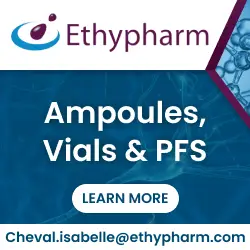

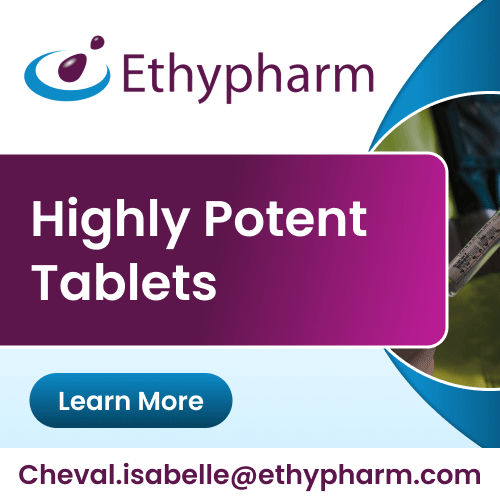
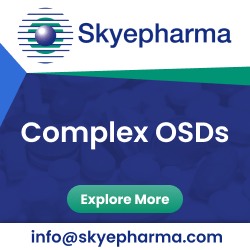
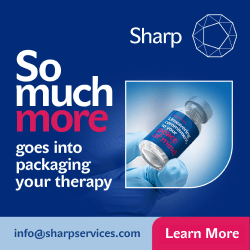
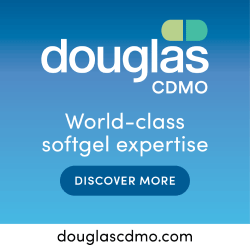




 Ethypharm is an international Pharma company with European roots manufacturing and commercializing essential drugs all over the world.
Ethypharm is an international Pharma company with European roots manufacturing and commercializing essential drugs all over the world.



















